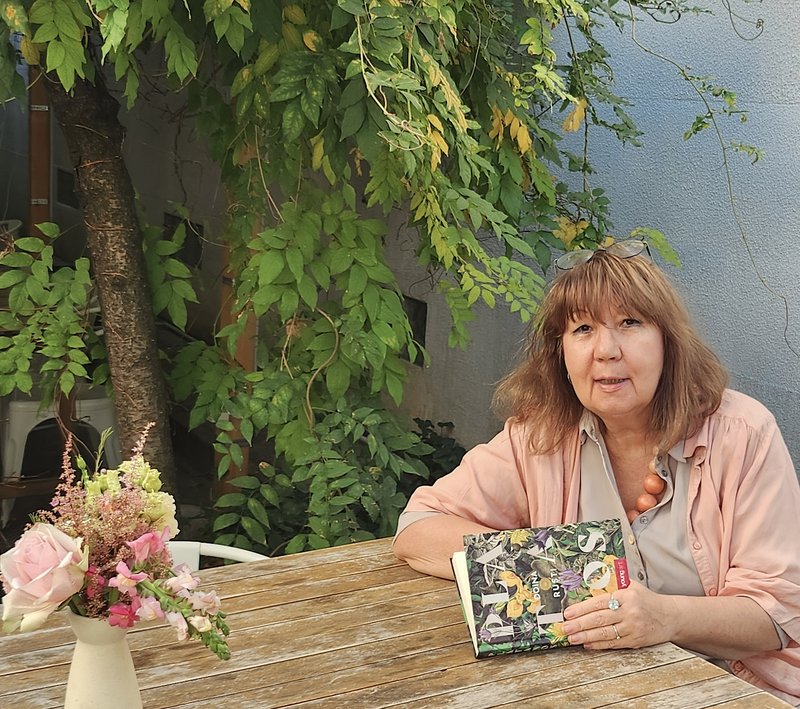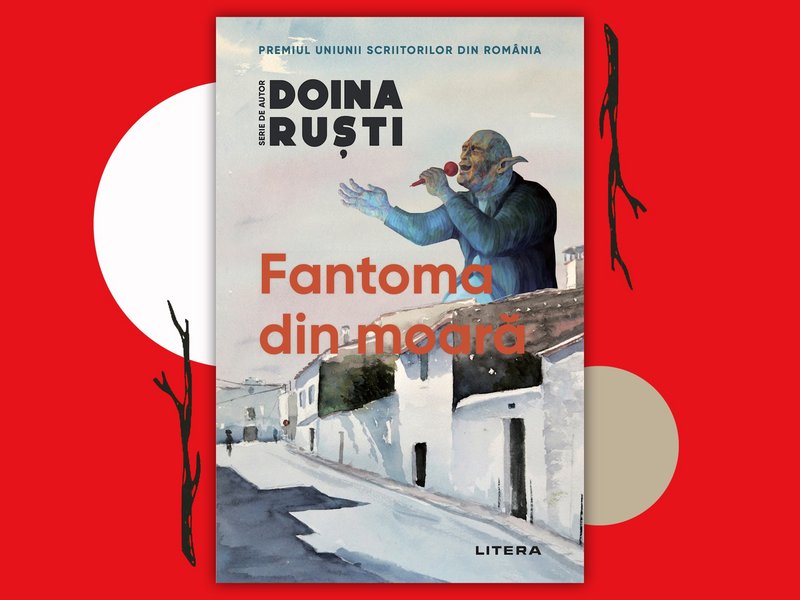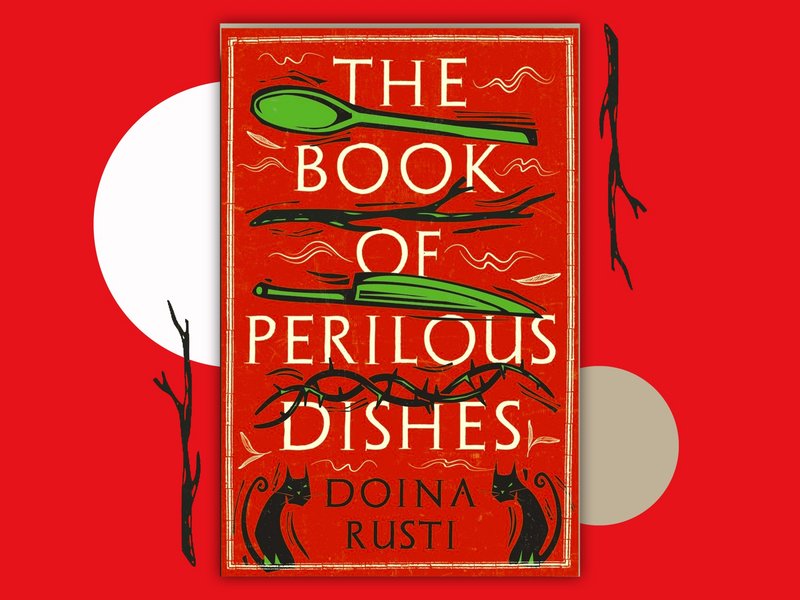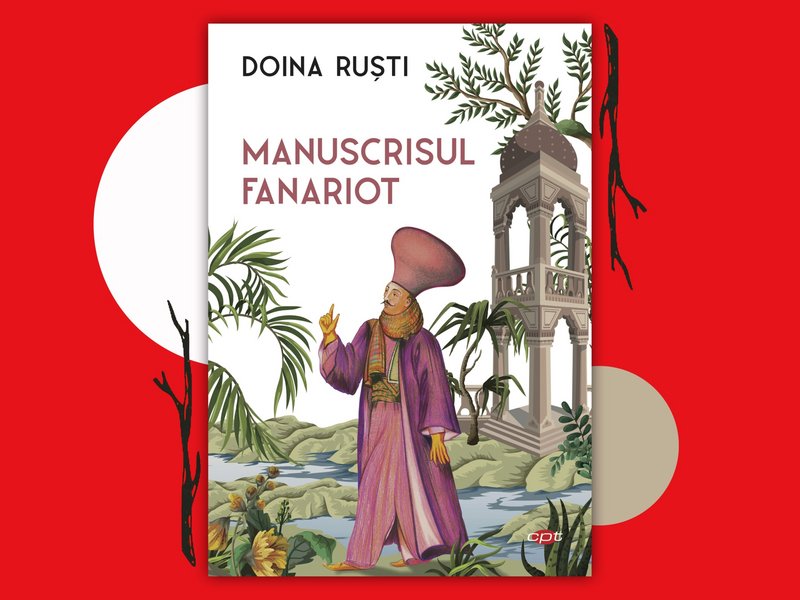
Romanian novelist Doina Ruști is known as one of the most distinctive voices in contemporary literature. She is prolific and widely translated, having written dozens of novels, including the Phanariot Manuscript, part of a trilogy, alongside various collections of short stories.
In* The Ghost in the Mill, she channels the experience of her upbringing, during the chaos of the end of communism, into a parable on a society formed by oppression and overbearing rules. Meanwhile, Lizoanca at the Age of 11* is the story of a child charged with atrocities actually committed by her accusers.
When Ruști was 11 years old, her father was murdered in circumstances that remain mysterious. She has written about that in a different book, the recently published Ferenike. She spoke to Al Majalla about blending magical realism with lived experience, depicting Romanian national identity and being most famous for writing about food. This is the conversation.
*1. In *The Ghost in the Mill, you weave elements of magical realism with historical Romanian folklore. How did you balance the supernatural aspects with the socio-political realities of the communist era?
Dear Nesrein, first of all, I thank you infinitely for this joy of receiving your message from Cairo—the city of all stories and dreams. I haven’t yet been to Cairo; it remains one of my dreams, a destination on my list. The pleasure of speaking with you is even greater. So thank you for asking such thoughtful questions that make me feel important—and that make me eager to read your own fiction.
The Ghost in the Mill is my central novel. Its structure allowed me to enter naturally into the “mill” that was Romanian communism—a world in which my youth was ground away and where everything seemed to be controlled by an unseen master. Since the Ghost itself is a character in the novel, it wasn’t very difficult to integrate the supernatural. Born from the happiness and pain of a rural schoolteacher, my ghost is a projection of history itself—no need to emphasize how perverse that history can be.

*2. *
Lizoanca at the Age of 11* explores themes of childhood trauma and societal neglect. What inspired the main character, and how does she reflect broader issues in contemporary Romanian society?*
Pedophilia and child abuse are rarely addressed directly. A newspaper article once struck me for its brutally crude tone: a child was being blamed for an epidemic in her village. The way that story was repeated, without an ounce of compassion for the child, compelled me to confront the theme—first through research, during which I came across more than 300 documented cases of abused children in recent years. Then I decided to write the novel, in part to do something for that child who had become a public enemy.
Lizoanca, my most translated novel and winner of the Romanian Academy Prize, brought me literary visibility—not only because of its theme, but also because it’s a direct, realist novel through which I wanted to help build the foundations of a resistant public conscience. I don’t know if I succeeded, but the book has remained successful, with new editions still being published.
3. Your work, The Book of Perilous Dishes, draws on 18th-century Bucharest and culinary magic. Could you discuss how food serves as a metaphor for power, intrigue, and cultural identity in this story?
Perhaps my best-known novel, since it has been translated into English, The Book of Perilous Dishes (Mâța Vinerii in Romanian, or Cat o’ Friday) brings to the forefront the story of a slave cook in the 18th century. I loved writing this book, which also has German, Spanish, and Hungarian editions. Though its historical background—and even the cook’s story—are real, the novel is written in a fantastical register, revolving around 21 culinary and magical recipes.
I have always been fascinated by culinary combinations—they reveal most directly the mindset of an ethnic group. In the novel, the recipes come from an ancient culture of the Satorini people, blending together Romanian beliefs and myths. My favorite is the rose-petal cake that brings on the “laughing sickness,” causing a series of comic entanglements that drive the plot. But I also adore the witch Sirka’s little cake—for love.

4. In Zogru, the immortal protagonist offers a unique lens on human history. How does this character’s eternal perspective allow you to critique modern Romanian identity and the passage of time?
Indeed, beyond the story of an eternal entity—apparently whimsical and picaresque—lies the solitude of a singular being and its need to publicly affirm its identity. Among all my characters, Zogru is closest to me: in his naivety and his natural tendency to make blunders and cause confusion. That’s also my own existential pattern—a well-intentioned person but perpetually unlucky. Perhaps that’s why I loved writing this novel so much.
Among major languages, it’s been translated into French and Italian. Written as a quest for love and a destined soulmate, in the spirit of The Thousand and One Nights, it’s a novel with a strong epic line—and a happy ending.
5. The Phanariot Manuscript delves into historical fiction with fantastical twists. What research process did you undertake to authentically portray the Phanariot era while infusing it with surreal elements?
I started from a real manuscript—a contract for the sale of a human being. But gradually, by linking facts together, I turned this 18th-century document into a character. My bond with it is purely emotional.
The Phanariot Manuscript is a novel about love and freedom, two concepts that meet in a shadowy zone of vanity and selfish aspirations, both of them overstrained. In love with a slave, Leun (17 years old) must give up freedom for the sake of love: according to Romanian law at that time, anyone who married a slave also became a slave, along with his whole family if he had one.
Leun faces a dilemma, and his hesitations become fabulous. The entire society, historical facts of the period, and real characters enter the dream of this ambitious adolescent. His main desire is linked to identity and self-affirmation: he belongs to a small community of Vlachs in Thessaloniki and dreams of becoming a tailor. He sets out across the Ottoman Empire, but his dreamed-of freedom collapses. The fabulation and fantastic elements enter and transform his story into a message about identity.

6. Romanian culture is rich with folklore and myths. How do these traditional elements influence modern Romanian writers, and how have you incorporated them to address contemporary themes in your novels?
There is a Mediterranean side to Romanian folklore, born of geography and ties to Greco-Latin antiquity. There is also a Balkan folklore, inherited from centuries of connection with lands south of the Danube. And finally, there is an autochthonous layer, consolidated culturally through the powerful Romanian folklore school of the 19th century.
Among the myths most illustrative for Romanians, I would mention stories of tricked devils, of infernal horses, of Mărțișor, and especially of catching thieves. These are based on a belief that after you’ve been robbed, you scatter ashes in the hearth—today we’d say, in the kitchen—and draw there a map of your town. You pray to the “Empress of Flies,” and the next day, on your map, a fly traces the thief’s path with a fine line leading from your house to where the thief is hiding. And that’s it, you’ve caught him!
Of course, there are also grave myths, with philosophical depth, as with all peoples: the myth of death (Miorița) or of eternal youth. But there isn’t yet a true tradition of folkloric re-evaluation in contemporary literature. Things usually stop at satire or adaptation. Romanians are very fond of international myths. As for me, I have a passion for Romanian folklore, so in nearly all my novels, there are references, themes, and especially symbols taken from local mythology.
7. What role does Bucharest play as a literary setting in Romanian fiction, and how have you used its historical layers to explore themes of corruption and transformation in your stories?
I’m in love with Bucharest—patched up, abandoned, and corrupt as it is. Naturally, it’s also my favorite literary space. Among contemporary writers who use it as an epic setting are Mircea Cărtărescu and Gabriela Adameșteanu.
As for my own work, several novels deal with the subject. Besides Lizoanca at the Age of Eleven, I wrote a novel about the decline of authority in all its forms—from parental to political—titled Mămica la două albăstrele (Adultery in translation). But my Phanariot Trilogy offers a more elaborate image of Bucharest, focusing on its continuous transformations, where enduring legacies remain essential. The Phanariot Manuscript, The Book of Perilous Dishes, and Homeric are the three novels dedicated to historical Bucharest.
8. Romanian literature often grapples with the legacy of dictatorship. How do you navigate the balance between historical accuracy and artistic freedom when depicting such sensitive cultural wounds?
You’ve touched on my most sensitive point. Many of my books deal with this theme, but The Ghost in the Mill is a true parable of communism—using symbolic methods, in the tradition of the fantastic style cultivated under dictatorship, when allegory could conceal a writer’s intentions.
Recently, I published an autobiographical novel about the murder of my father during the communist period. This time, the style is direct, simple, with deliberately raw realism. It is called Ferenike—a clear reference to the condition of women. Ferenike was a princess of Rhodes, around 400 BC, who disguised herself in men's clothes in order to participate in athletic contests where women were forbidden.
The title is symbolic because the novel is a radiography of my youth, at the crossroads of personal tragedy and national drama, starting with Ceaușescu's anti-abortion decree, which led to the killing of tens of thousands of women.
Doina Ruști at the Circolo dei Lettori literary event in Torino – News.ro coverage
9. Your writing often stems from personal grievances or historical documents. What draws you to these archival inspirations, and how do they shape your creative process?
In literature, everything is personal. The Book of Perilous Dishes comes primarily from my fascination with kitchens. I don't cook. But I love to watch and enjoy the alchemy of flavours. I don't believe in fiction born from research, but I do believe in passion for archives. I am an enthusiast of private documents: contracts, shopping lists, wills, bills of sale, trials, and letters. In them, history appears at ground level. Sometimes I've become obsessed with a document, such as the one at the base of The Phanariot Manuscript.
This isn't journalistic research. First comes emotion, which gradually turns into obsession—and only then do I sometimes look into details. My literature doesn't come from documents but from the pleasure of epic play. Without emotion, there is no literature.
10. In exploring forgotten 18th-century cities and sagas, what personal or cultural memories inspire you to resurrect these obscured histories through fiction?
I'll give an example. I left home at 15 to study in another city. The rupture, then adaptation, and especially life as a teenager without family, became themes in my books—even those set in the 18th century. In The Phanariot Manuscript and The Book of Perilous Dishes, the main character, though an adult, recounts experiences from age 15, including running away from home.
The same is true in Zavaidoc in the Year of Love: Matilda sees her departure from home as an escape. But the worst trauma was the murder of my father. That was the generic drama. I was 11 when he was killed, and there is hardly a novel of mine that doesn't involve a crim
Teaching creative writing, what key lessons do you impart to aspiring Romanian writers about finding their voice in a global literary landscape?
Not to follow any advice. To write, and that's it. If nothing comes, if they have no idea or desire, then it means they shouldn't write. A writer is someone who has read much fiction, so much that they finally gain the strength to live their own adventure. Literature is a game: when you feel like playing—you play; when you don't—you don't.
In your short story collections, you experiment with form. How do these shorter works serve as a testing ground for ideas that later appear in your novels?
Short stories are small breaks—delights at teatime. In the last four years, I have written a weekly story for a daily newspaper, Adevărul, and I have enjoyed it greatly. I also wrote for anthologies or collections. But the novel suits me best.
About Doina Ruști
Doina Ruști is one of Romania’s leading contemporary novelists, author of fourteen novels and three short story collections. Winner of the Romanian Academy Prize and the Writers’ Union of Romania Award, her fiction is translated into seventeen languages.